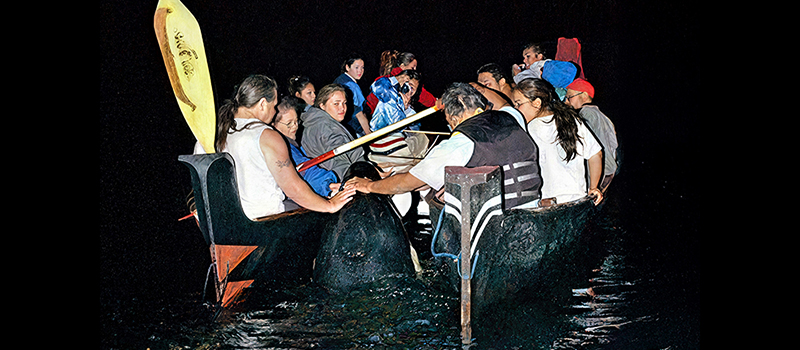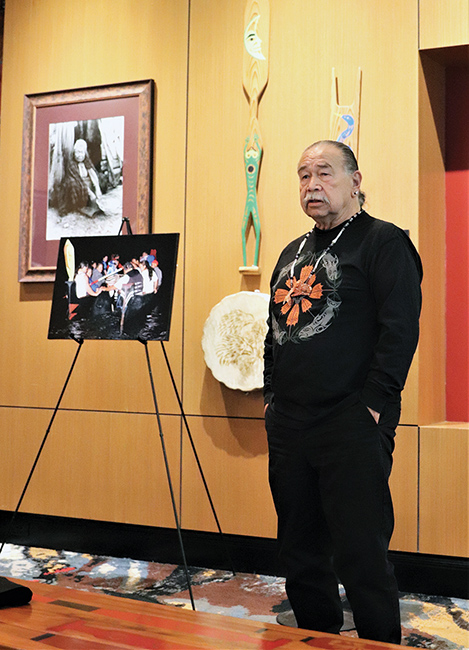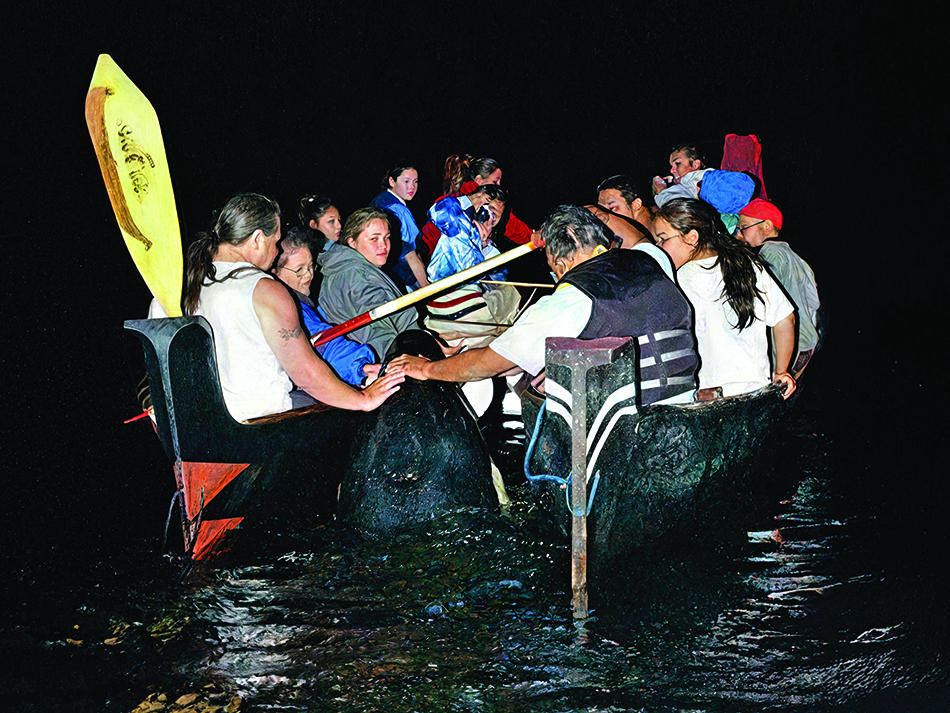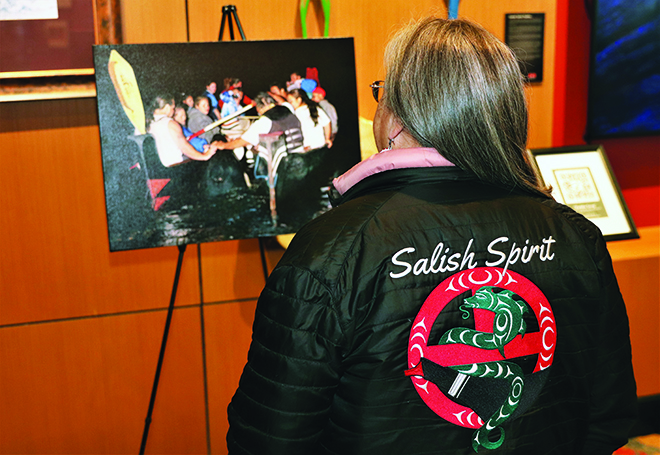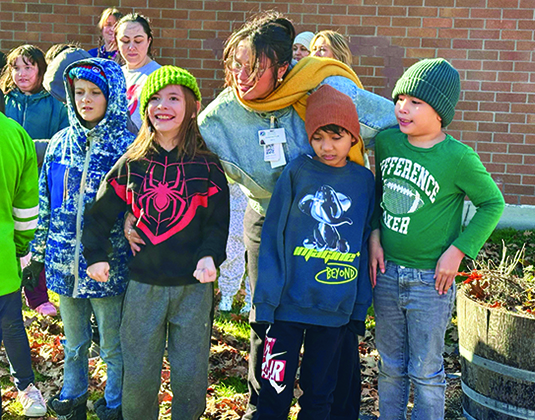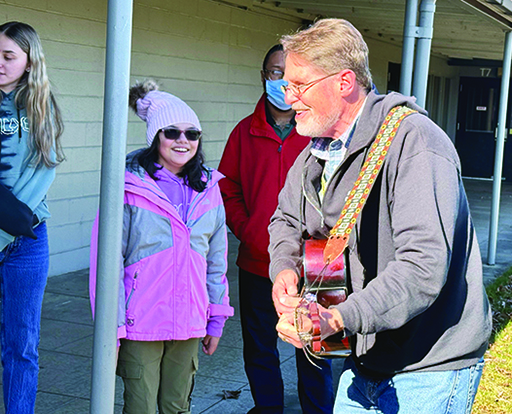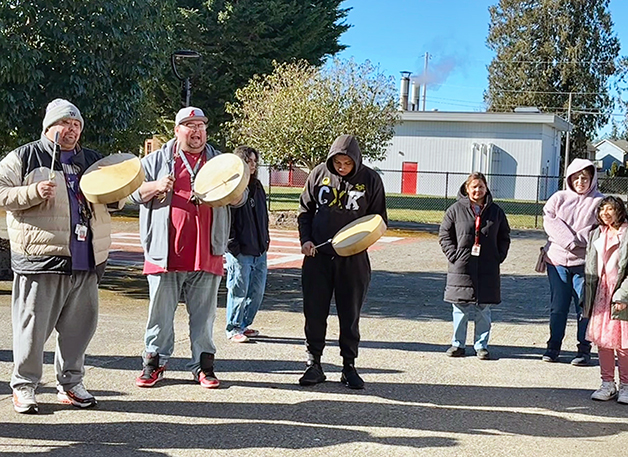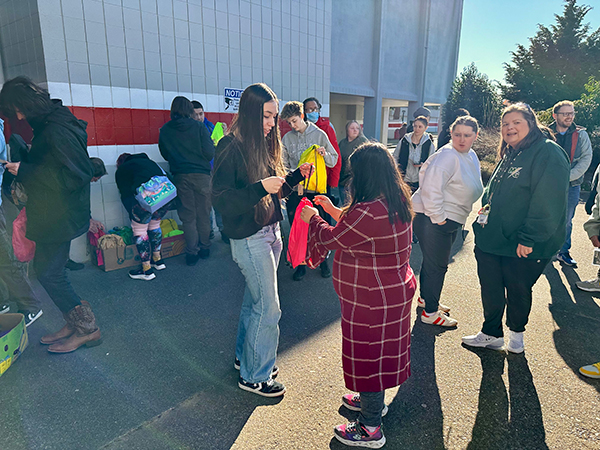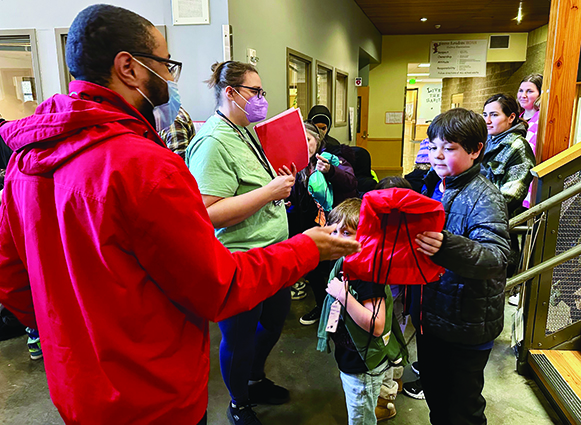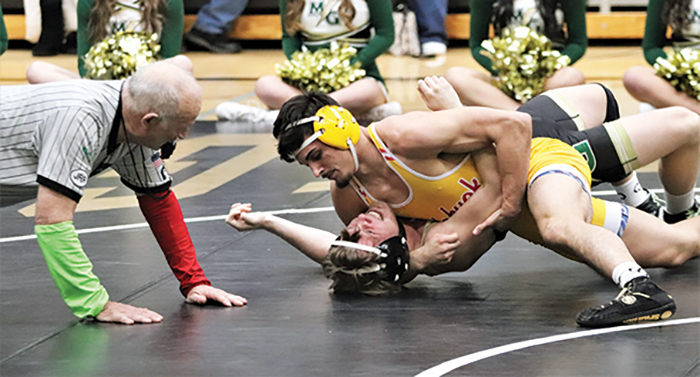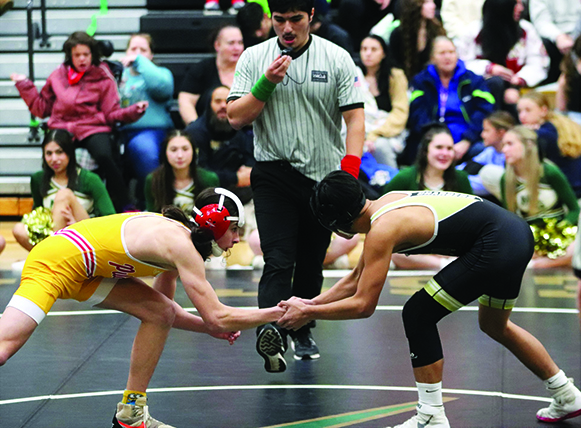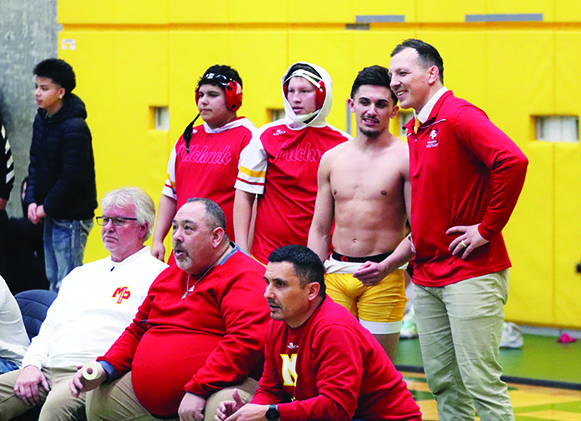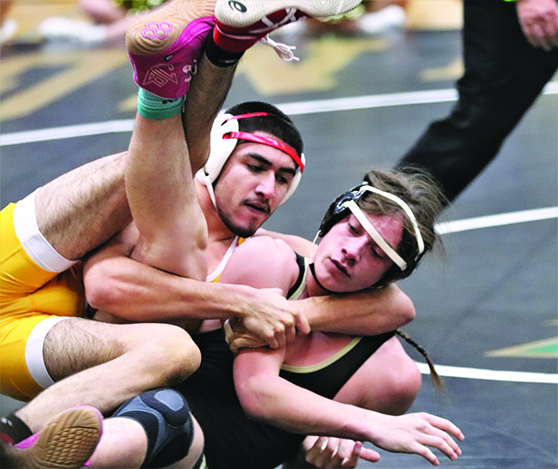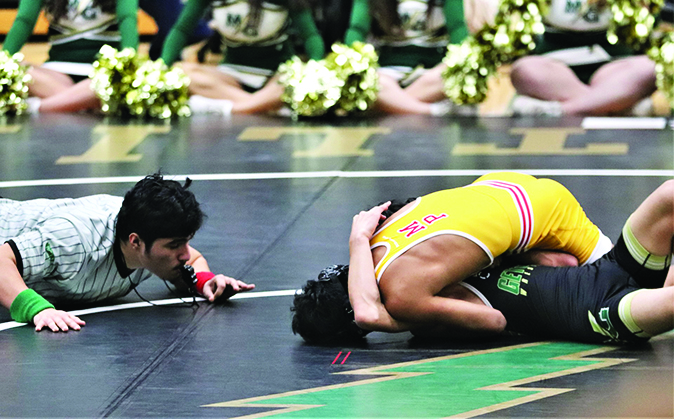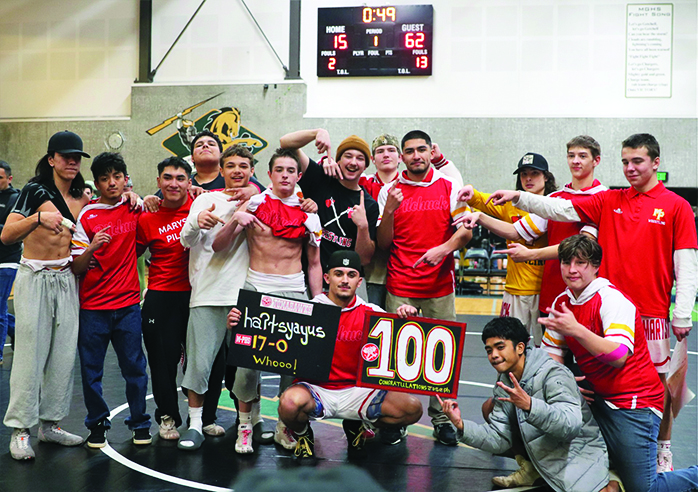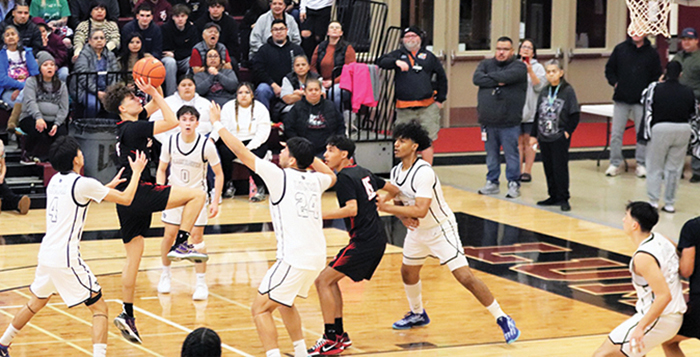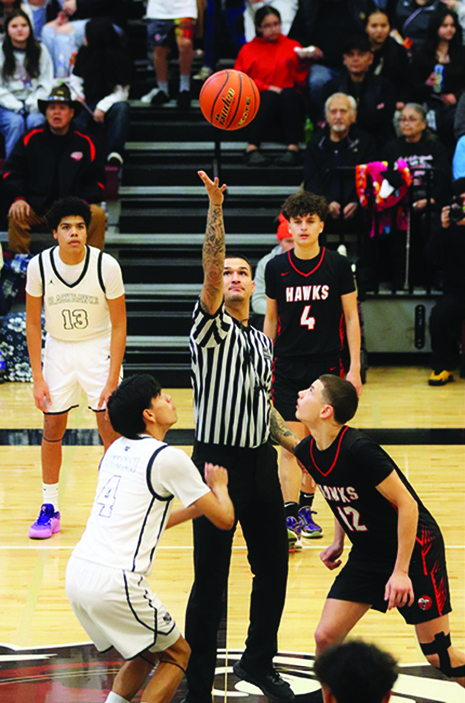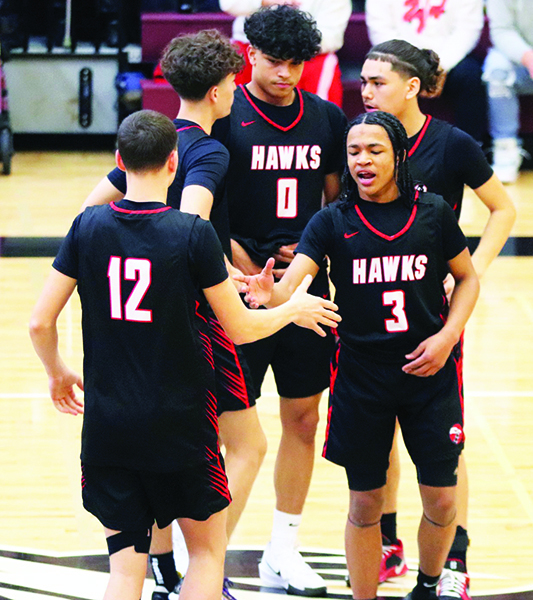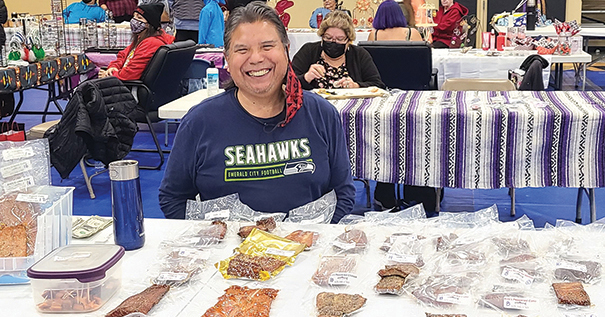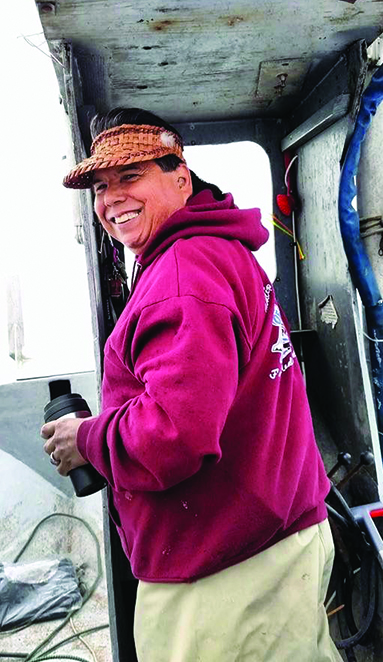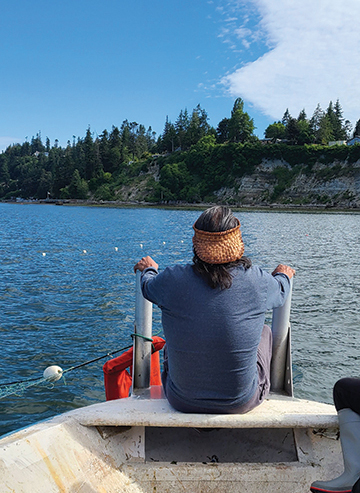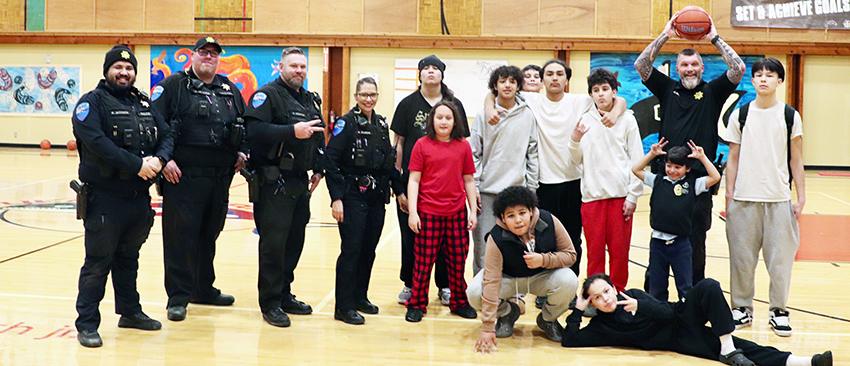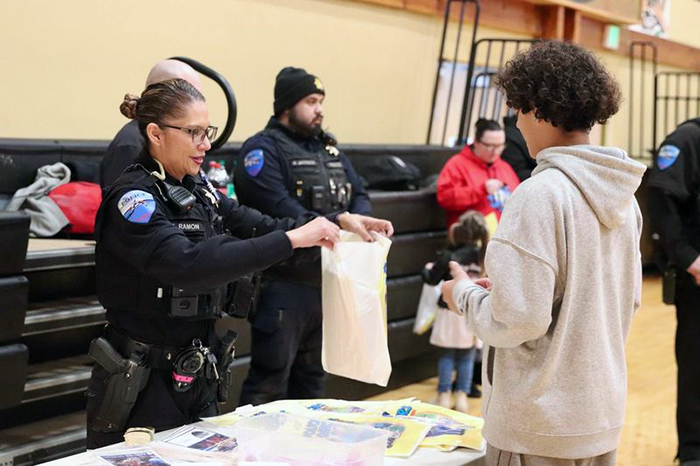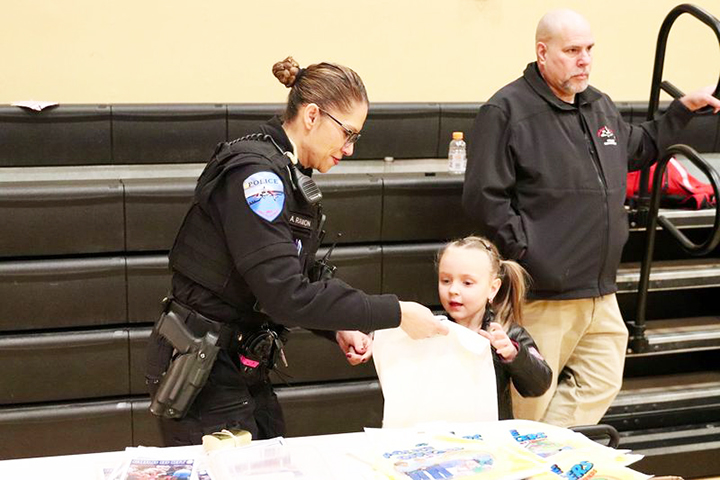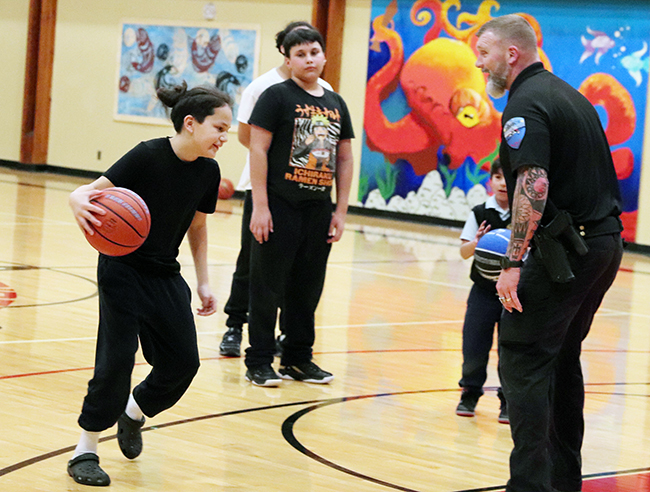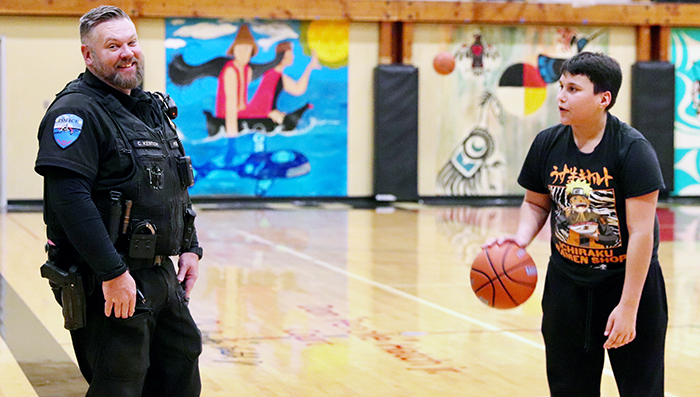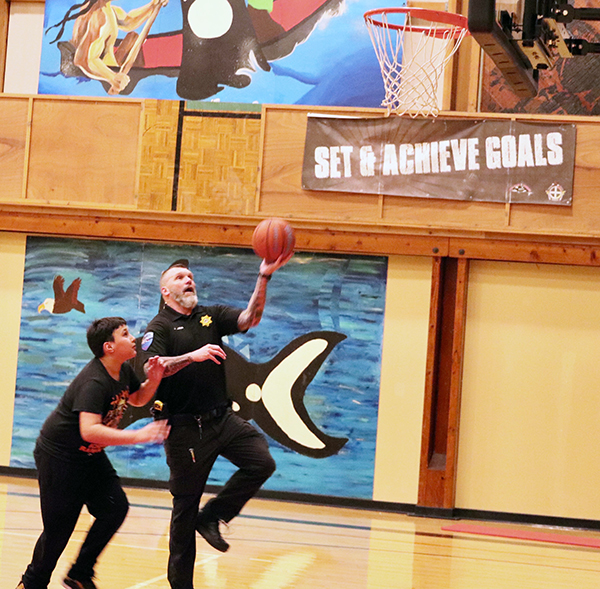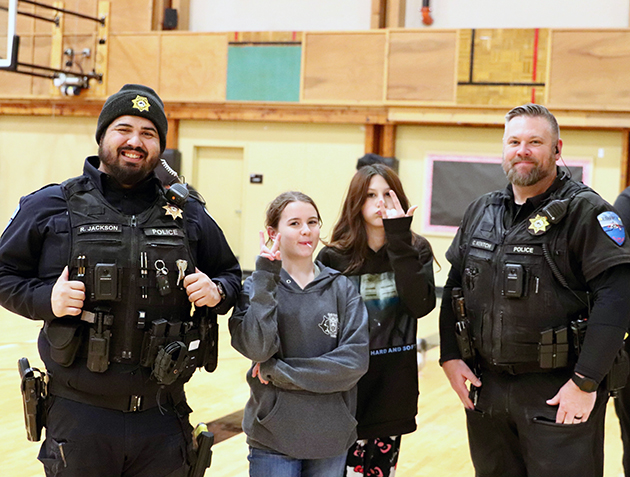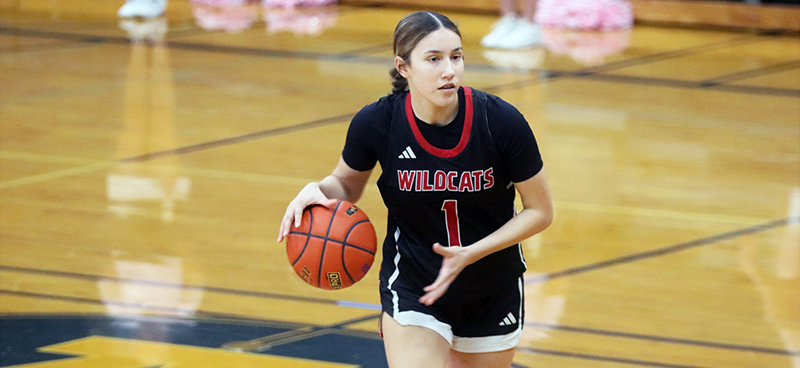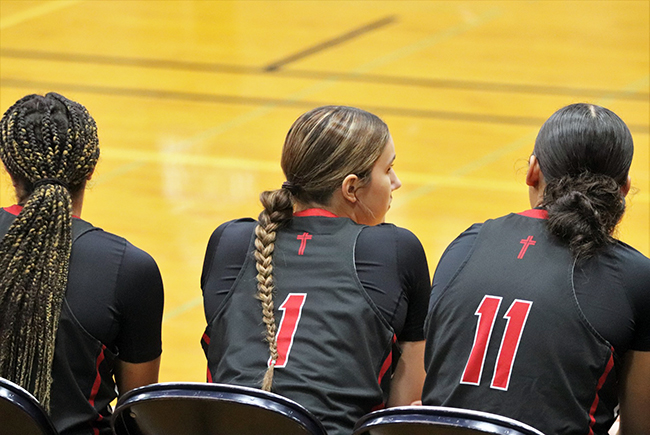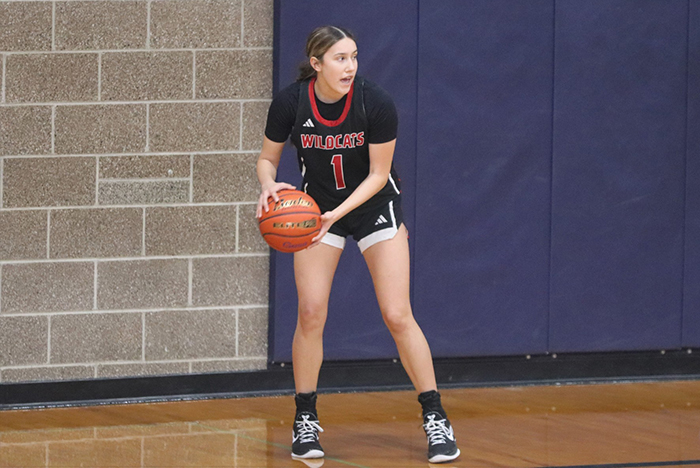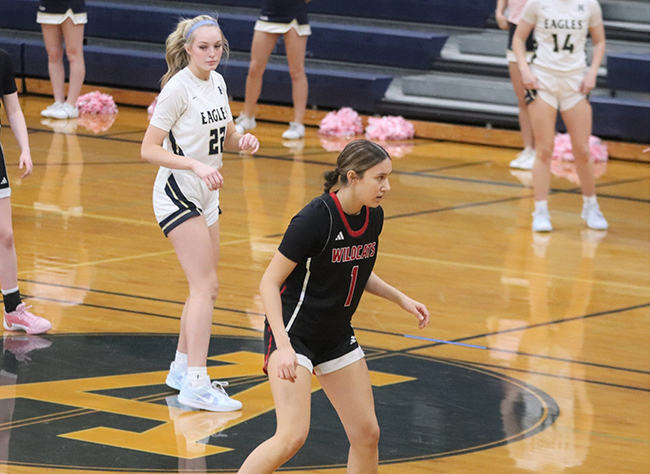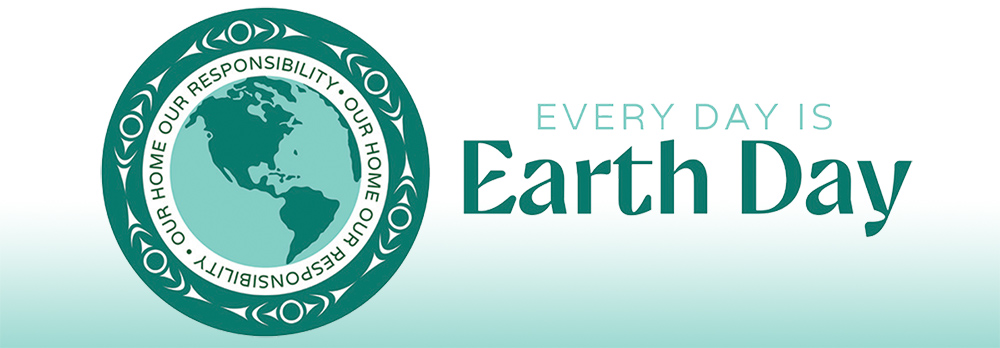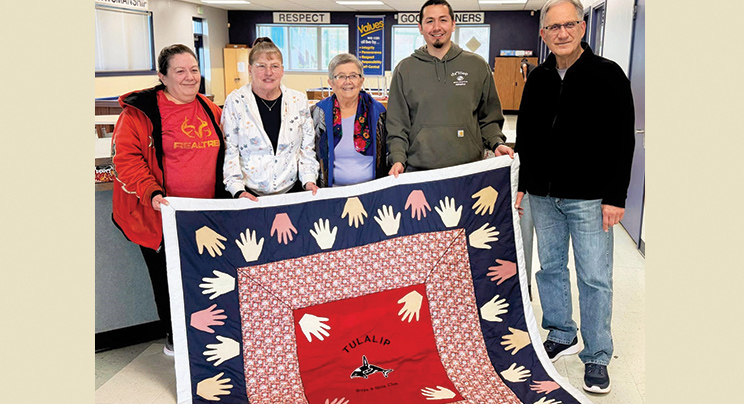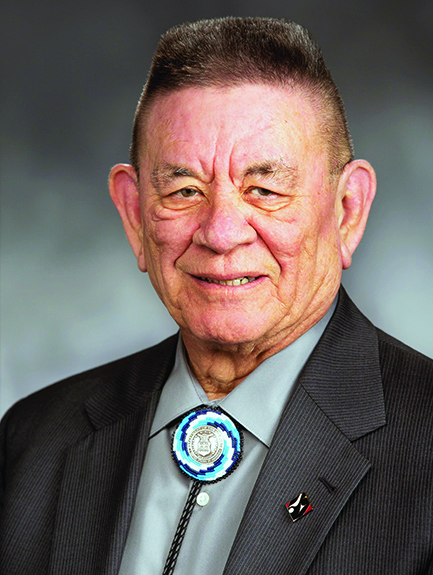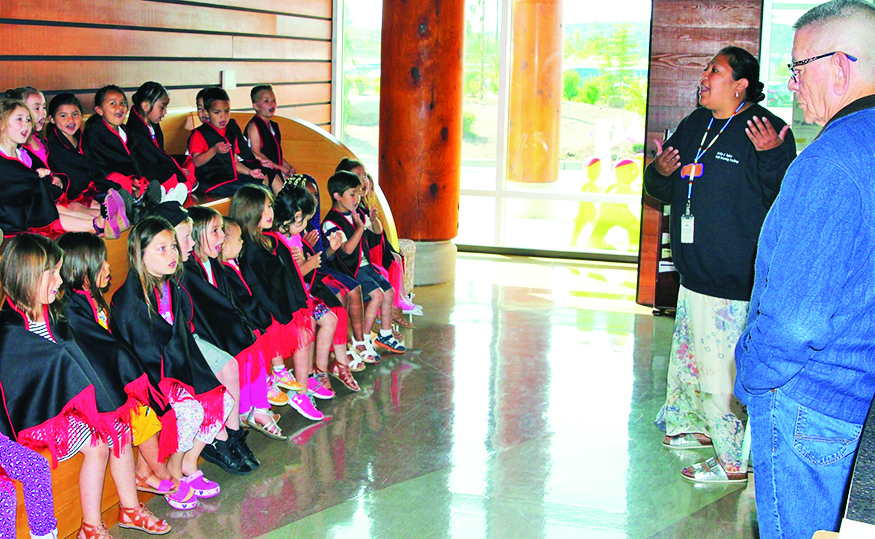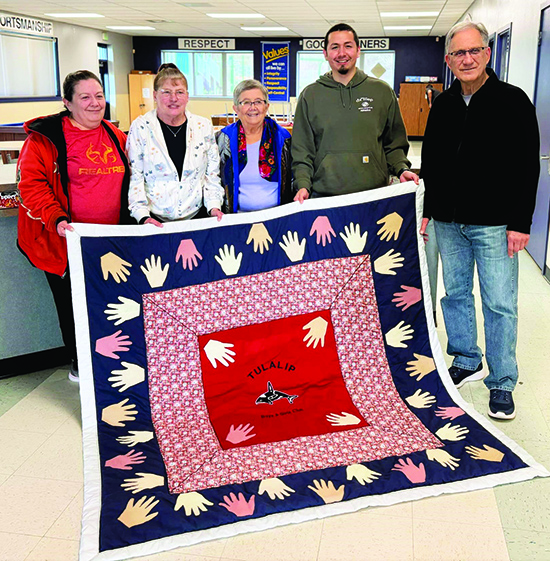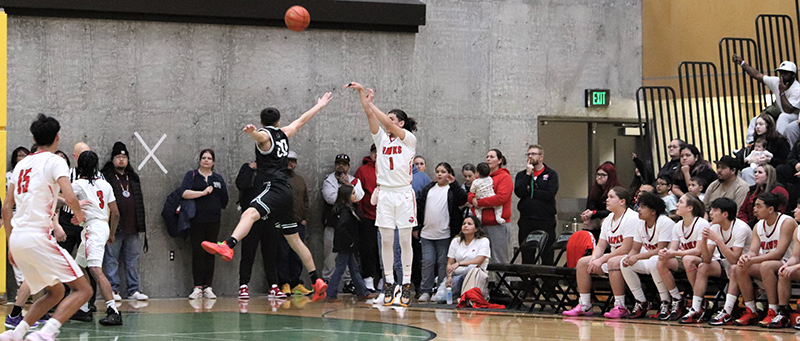
By Micheal Rios, Tulalip News
A second round Tri-District Tournament matchup with the Muckleshoot Kings (16-4) was expected to draw such a large crowd that the game was moved from Francy J. Sheldon gymnasium to Marysville Getchell. Those at the top who made that bold decision were proven right as Rez ball fans from across the I-5 corridor ventured to Marysville to watch the Tulalip Heritage Hawks (17-2) punch their ticket to the WIAA 1B State Tournament.
“The atmosphere at practice this week was good. The boys were excited for this matchup and were eager to play on this floor,” said head coach Shawn Sanchey pre-game. “We know the energy is going to be turned up a notch anytime two tribal school play one another, especially in the playoffs with fan bases that travel super well. There’s going to be a ton of talent on the floor, but we’re expecting our starters to do what they’ve been all season, which is executing our offense and keeping to our style of play.”
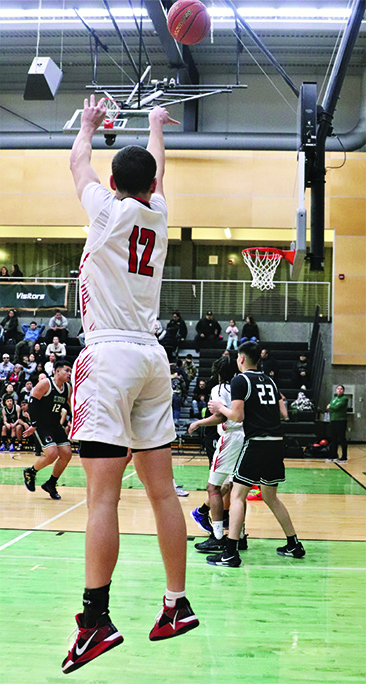
In front of hundreds of enthusiastic tribal onlookers, the Hawks and Kings put on a show. Muckleshoot jumped out to an early 9-3 lead with Tulalip’s offense appearing sluggish after the opening whistle. The ‘home team’ quickly responded though. Led by sophomore guard J.J. Gray and junior forward Davien Parks who opted to forgo the 3-ball in favor of attacking their matchup and getting quality looks from the painted area. The Hawks finished the 1st quarter on an 11-3 run to take a 14-12 lead. A lead they would not surrender.
They pushed their lead to 32-28 at halftime, and extended quickly to double-digits after Davien showed a flurry of moves to score around the basket. Up 42-32, Heritage’s offense began firing on all cylinders after shooting just 1-12 from 3-point territory. First, J.J. splashed a 3-ball. Then his backcourt mate, sophomore guard Amare Hatch, splashed back-to-back 3’s that received an eruption from the crowd and bench players.
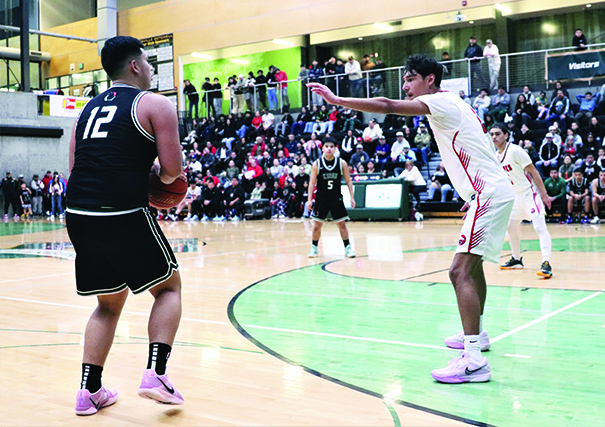
Tulalip took a commanding 67-47 lead midway in the 4th quarter that gave coach Sanchey the breathing room to pull his starters and give his bench players some burn. Chants of “Tulalip power!” rang out as the final game buzzer sounded and Heritage claimed a 69-61 victory.
Following the game, junior forward Tokala Black Tomahawk reflected on his opportunity to play extended minutes and produce big baskets and rebounds after starter Ziggy Myles exited the game early with an ankle injury. “I just wanted to come in and do my part to help our team get this win,” he said. “This morning my dad told me to just make the most of my time on the court and do my best to go after every rebound. Hearing his voice motivates me and it really paid off tonight.”
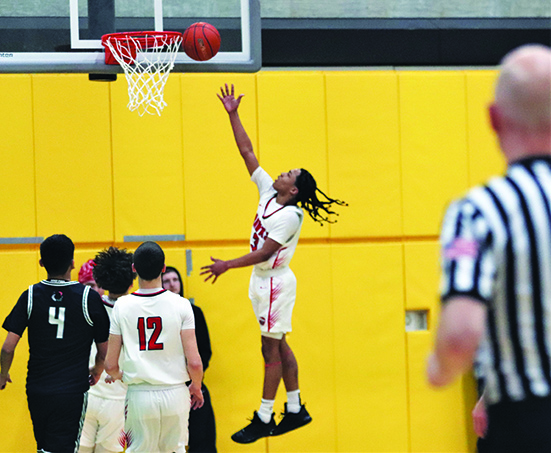
Tokala finished the game with 11 points, as did Amare. Davien scored 18 points, but it was the shortest Hawks starter, 5-foot-5 J.J. who led Tulalip with 21 points. He seemingly got a bucket whenever Muckleshoot looked to mount a comeback by penetrating the heart of their defense and scoring over multiple taller players, over and over again.
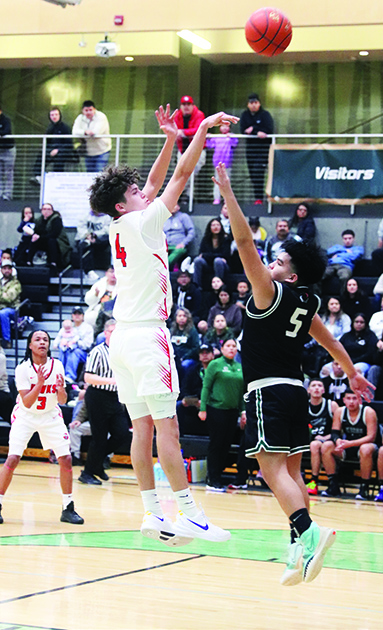
“When we play team ball, you know, move the ball around and get the defense to chase us around, it wears them down over four quarters. Eventually, the other team gets tired and that’s when our speed and stamina show out,” explained J.J. after the win. “It feels great to get the W because we had this matchup circled ever since we found out us and Muckleshoot were on the same side of the bracket. Looking forward, we just got to stay humble and do us, like always.”
